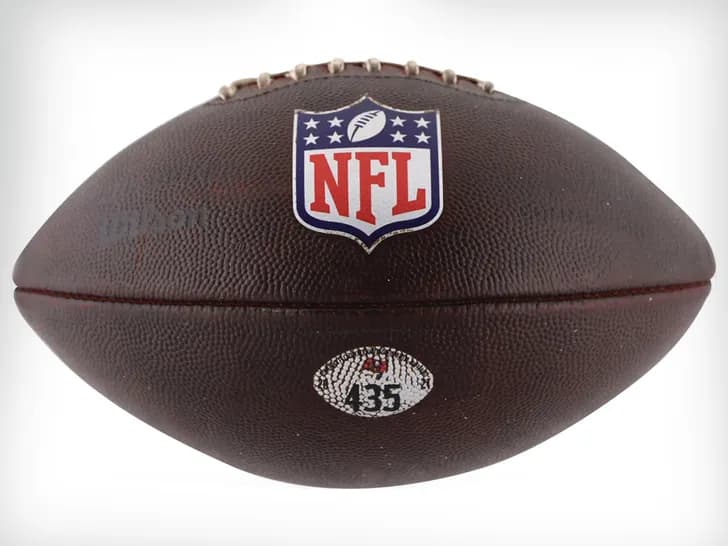Social media and the Internet are interesting tools. Among other things: they can be used to facilitate an exchange of ideas and opinions among people with similar interests and occupations; they can provide access to seemingly limitless caches of information (both accurate and inaccurate); and they can arm someone with terms of art and small kernels of knowledge that might be parleyed into a convincing (if not dangerous) aura of authority on topics with respect to which the speaker is not truly informed. As an example, I have never studied jet propulsion, but give me a couple of hours on Google and a roomful of people who know less about it than me, and I might sound like a jet propulsion genius. Of course, if someone took good notes and tried to build a rocket based on what I had to say, the consequences would likely be disastrous. And, that’s where the irresponsibility of some of these Internet mavens reveals itself – the harm, and potential harm, it visits on others. For this very reason, if someone is going to advise auctioneers as to what the law requires or prohibits, he or she should have more than a passing acquaintance with legal principles gleaned from a Google search. “Otherwise,” to quote Dwight Schrute, “it’s just malfeasance for malfeasance’s sake.”
One recurrent problem I’ve seen in this regard, is the specious characterization of an individual’s preferred practices as customary practices or legal requirements, or both, when they are, in truth, neither. Such activity does not benefit the auction industry, but, instead, has the capacity to encourage disgruntled sellers, bidders, and buyers to eschew personal responsibility by dragging, or threatening to drag, auctioneers into court (and, sometimes, it generates fees for the hired-gun experts who help them). It is one thing to say, “I believe it is a good practice for auctioneers who sell AS IS to provide a reasonable opportunity for a pre-auction inspection whenever possible” – which, by the way, is advice I regularly give to auctioneer clients along with a principled explanation as to why. It is quite another thing to say, “As a matter of law, an auctioneer cannot sell AS IS unless there is a reasonable opportunity for a pre-auction inspection,” or that “The law says that you cannot hold a bidder to an AS IS sale unless there has been a reasonable opportunity for a pre-auction inspection” – both of which statements are just flat wrong from a legal perspective. In this regard, and while I won’t speculate as to motivation, I wonder to what extent the target audience for the statement that an auctioneer cannot hold a bidder to an AS IS sale unless there has been a reasonable opportunity for a pre-auction inspection is comprised of auctioneers, and to what extent that target audience is comprised of those who – due to buyer’s remorse or otherwise – might be looking for a way to get out of a transaction or to sue an auctioneer.
While the issue of selling AS IS with or without an opportunity for pre-auction inspection has been the subject of a somewhat academic discussion in the past (when pre-auction inspections were both possible and routinely available), it has become a more pressing concern with real-world implications during the time of COVID-19 and associated social distancing restrictions. Specifically, if an auctioneer can conduct an online auction, but is precluded from allowing potential bidders onsite for a preview, can the property still be sold AS IS? In other words, do the realities of social distancing deprive contracting parties of their ability to allocate certain risks by contract?
Let’s start with a brief history of the running debate on this issue. Several years ago, a self-proclaimed auction law “expert” began telling auctioneers that, as a matter of law, you cannot sell AS IS unless you make a pre-auction inspection available. That statement appears to be the product of a Google search that yielded a reference to Mottram v. United States, 271 U.S. 15, 46 S.Ct. 386, 70 L.Ed. 803 (1926). As the argument goes (or, as it originally went before being subsequently massaged by the author) –
“The Supreme Court of the United States has set the minimum standard for as-is sales for auctioneers. In Mottram v. United States (1926) the Court ruled that a buyer at auction can only be held to an as-is transaction if that subject property is open for inspection and the buyer has [reasonable] opportunity for preview.”
Ascribing both authority and weight to the Mottram decision, the same expert has told auctioneers that –
“The Supreme Court of the United States in Mottram v. United States dictates that in “as-is” auction sales the subject property must open for inspection and the bidders have [reasonable] opportunity for preview.”
Now, those are pretty strong and definitive statements. And, as I read them, the clear message is that auctioneers cannot hold buyers to an AS IS standard unless there has been a reasonable opportunity to conduct a pre-auction inspection – because the Supreme Court of the United States said so. The problem with that legal conclusion is that it is, in a word, wrong. The Supreme Court of the United States has never said that auctioneers must afford bidders an opportunity to conduct a pre-auction inspection in order to sell AS IS. Moreover, even if the U.S. Supreme Court had articulated such a holding, it would not be binding on most auction transactions because most auction transactions are governed by state law, and the decisions by the Supreme Court of the United States are not binding authority as to the meaning of state law. That being said, there is not necessarily anything wrong with a self-proclaimed industry expert who stays in his lane and advises auctioneers on his perception of industry standards and best practices (clearly indicated as his preference). The problem arises when opinions as to customary practices are fortified by misstatements of the law, and auctioneers are given erroneous information as to what the law allows them to do or precludes them from doing.
Back to the issue at hand – If the Mottram case doesn’t govern use of the AS IS disclaimer in most auction transactions, what law does? Well, as I wrote recently (http://www.michak.legal/blog/can-an-auctioneer-sell-as-is-without-a-preview), Section 2-316 of the Uniform Commercial Code specifically addresses the exclusion and modification of warranties (both express and implied), as well as the use and effect of the AS IS disclaimer with respect to implied warranties. Here’s what it says:
§ 2-316. Exclusion or Modification of Warranties.
(1) Words or conduct relevant to the creation of an express warranty and words or conduct tending to negate or limit warranty shall be construed wherever reasonable as consistent with each other; but subject to the provisions of this Article on parol or extrinsic evidence (Section 2-202) negation or limitation is inoperative to the extent that such construction is unreasonable.
(2) Subject to subsection (3), to exclude or modify the implied warranty of merchantability or any part of it the language must mention merchantability and in case of a writing must be conspicuous, and to exclude or modify any implied warranty of fitness the exclusion must be by a writing and conspicuous. Language to exclude all implied warranties of fitness is sufficient if it states, for example, that “There are no warranties which extend beyond the description on the face hereof.”
(3) Notwithstanding subsection (2)
(a) unless the circumstances indicate otherwise, all implied warranties are excluded by expressions like “as is”, “with all faults” or other language which in common understanding calls the buyer’s attention to the exclusion of warranties and makes plain that there is no implied warranty; and
(b) when the buyer before entering into the contract has examined the goods or the sample or model as fully as he desired or has refused to examine the goods there is no implied warranty with regard to defects which an examination ought in the circumstances to have revealed to him; and
(c) an implied warranty can also be excluded or modified by course of dealing or course of performance or usage of trade.
(4) Remedies for breach of warranty can be limited in accordance with the provisions of this Article on liquidation or limitation of damages and on contractual modification of remedy (Sections 2-718 and 2-719).
Although I happen to have one, it doesn’t take a law degree to see that Section 2-316(3)(a) says that “unless the circumstances indicate otherwise, all implied warranties are excluded by expressions like “as is”, “with all faults” or other language which in common understanding calls the buyer’s attention to the exclusion of warranties and makes plain that there is no implied warranty.” It says what it says, just like Section 2-316(3)(b) says that implied warranties can also be waived based by a pre-purchase inspection. However, there is nothing in Section 2-316 that says, or even suggests, that the AS IS disclaimer must be accompanied by an inspection in order to be effective. I’m not making it up, that’s what the statute says, and that’s how the courts have interpreted it.
While an argument has been articulated that as a matter of law the AS IS disclaimer must be accompanied by an inspection in order to be effective, that legal argument is contradicted by the UCC and the case law, and, thus, is about as compelling as the discredited proposition that “[t]he Supreme Court of the United States in Mottram v. United States dictates that in “as-is” auction sales the subject property must open for inspection and the bidders have [reasonable] opportunity for preview,” or, perhaps the arguments that the earth is flat, or that the sun rises in the west. Simply put, the law supports the proposition that an auctioneer can sell AS IS either with or without a pre-auction inspection. This rule of law becomes particularly relevant if auctioneers are prohibited from conducting live events, including auctions, previews, and pick-up. And, here’s where the practical concern about uninformed legal advice arises – if you subscribe to the rationale that auctioneers must (as a matter of law) have pre-auction previews in order to sell AS IS, and previews are not possible because of social distancing restrictions, then, the necessary conclusion is that social distancing restrictions, effectively, deprive an auctioneer of the ability to allocate risk by contract, thereby imposing implied warranties that cannot be disclaimed. This would be an industry-wide game changer. If, however, you draw your understanding of the UCC from the code, itself, and from actual case law, rather than Google searches, then, there is legal support for the continued use and effectiveness of the AS IS disclaimer even when a preview is not possible. It’s as simple as that.
Among other things, a lawyer’s job is to advise his or her clients as to the applicable law (which is not always clear and may be subject to interpretation) and to allow the client to factor that advice into the client’s business decisions. With respect to the issue of selling AS IS with or without a preview, I’ve given my interpretation of the law (which, frankly, is pretty clear on this point). It is not my job to tell auctioneers – and I would not presume to tell auctioneers – that they should or should not sell AS IS if a pre-auction inspection is not possible. Rather, I advise as to the possible legal implications or their business decisions. Of course, when making that decision it helps to get your legal advice from someone who actually knows what he or she is talking about. And, this is where the Straw Man Fallacy enters this discussion.
The Straw Man Fallacy is method of argument in which one party misstates the position taken by another in order to knock it down (like a straw man). Here’s how the Straw Man Fallacy has been employed in the ongoing discussion about whether an auctioneer is required to make a pre-auction inspection available as a condition to selling AS IS:
Auction Law "Expert": The law says that auctioneers cannot sell AS IS unless there is a reasonable opportunity for a pre-auction inspection.
Lawyer (me): The law doesn’t say that. The law says that you can sell AS IS with or without a pre-sale inspection. That’s something to think about if social distancing restrictions make a pre-auction inspection impossible.
Auction Law "Expert": That lawyer is telling auctioneers that they should sell AS IS and deny bidders the opportunity for a pre-auction inspection.
The Straw Man Fallacy is not a valid argument, and adds nothing meaningful to the discussion.
Prior to social distancing restrictions, I typically used this (or a variation of this) provision when preparing Bidder Terms and Conditions for auctioneer clients:
ALL PROPERTY SOLD “AS IS,” “WHERE IS,” AND “WITH ALL FAULTS.” ALL PROPERTY IS BEING OFFERED AND SOLD IN ITS AS IS/WHERE IS CONDITION AT THE TIME OF THE AUCTION, WITH ALL FAULTS, INCLUDING ANY HIDDEN DEFECTS OF ANY NATURE. NEITHER AUCTIONEER NOR SELLER MAKES ANY REPRESENTATIONS, WARRANTIES, OR GUARANTEES WHATSOEVER, EXPRESS OR IMPLIED, REGARDING THE NATURE, VALUE, SOURCE, AUTHENTICITY, FITNESS, MERCHANTABILITY, AND/OR ANY OTHER ASPECT OR CHARACTERISTICS OF SUCH PROPERTY. NO STATEMENT ANYWHERE, WHETHER EXPRESS OR IMPLIED, INCLUDING VERBAL STATEMENTS MADE BY AUCTIONEER, WILL BE DEEMED A WARRANTY OR REPRESENTATION BY AUCTIONEER OR SELLER. WITHOUT LIMITING THE GENERALITY OF THE FOREGOING, THERE ARE NO WARRANTIES OF NON-INFRINGEMENT, AUTHENTICITY, ORIGIN, MERCHANTABILITY, OR FITNESS FOR A PARTICULAR PURPOSE, ALL OF WHICH ARE EXPRESSLY DISCLAIMED. YOU ACKNOWLEDGE AND AGREE THAT YOU CANNOT RELY, AND HAVE NOT RELIED, ON ANY REPRESENTATION, WARRANTY, OR GUARANTY MADE BY AUCTIONEER OR THE SELLER, OR ANYONE ACTING AS AGENT OF THE SELLER, ORALLY OR IN WRITING. BY BIDDING, YOU ACKNOWLEDGE AND AGREE THAT YOU HAVE HAD A FULL AND FAIR OPPORTUNITY TO INSPECT THE PROPERTY, AND THAT YOU ARE RELYING SOLELY ON, OR THAT YOU HAVE WAIVED, SUCH INSPECTION AND INVESTIGATION (i) IN DETERMINING WHETHER TO BID, (ii) IN DETERMINING THE AMOUNT OF A BID, AND (iii) IN BIDDING.
This disclaimer undeniably contemplates an AS IS sale where a pre-auction inspection was possible – and I wrote it!
In this regard, the availability of a pre-auction inspection coupled with an opportunity to inspect prior to bidding, can protect an auctioneer even outside the contract context. A good example of this is Pardo v. Mecum Auction, Inc., (U.S.D.C., N. Dist. Ill., No. 12 C 08410 (2017)), which was decided in 2017 by the United States District Court for the Northern District of Illinois. In Pardo, the Plaintiff purchased a vehicle at auction, and, later, sued the auction company, claiming fraud and arguing that the auction company misrepresented the nature, character, and quality of the vehicle. In that case, not only was the vehicle sold AS IS, but there was an opportunity for a pre-auction inspection, and the buyer acknowledged that he was relying only on his (or his agent’s) inspection of the vehicle, not on any representations by the auction company. Applying Illinois law, the court concluded that the Plaintiff could not make out a case for fraud because fraud requires reasonable reliance on a misrepresentation of material fact. Without going any further, the court held that the buyer’s acceptance of the Bidder Terms and Conditions in which he acknowledged and agreed that he was relying on his own inspection – and that he was not relying on any representations by the auctioneer – meant that an essential element of a cause of action for fraud was missing. The case was decided in favor of the auction company. I was not involved in the Pardo case, but I often reference it to auctioneers as a good example of the benefit of strong Bidder Terms and Conditions and the ability of an auctioneer to allocate risk to the bidders, particularly when a pre-auction inspection is available.
Recognizing that pre-auction inspections may not be possible because of social distancing restrictions imposed due to COVID-19, I prepared the following language to reflect current circumstances:
ALL PROPERTY SOLD “AS IS,” “WHERE IS,” AND “WITH ALL FAULTS.” ALL PROPERTY IS BEING OFFERED AND SOLD IN ITS AS IS/WHERE IS CONDITION AT THE TIME OF THE AUCTION, WITH ALL FAULTS, INCLUDING ANY HIDDEN DEFECTS OF ANY NATURE. NEITHER AUCTIONEER NOR SELLER MAKES ANY REPRESENTATIONS, WARRANTIES, OR GUARANTEES WHATSOEVER, EXPRESS OR IMPLIED, REGARDING THE NATURE, VALUE, SOURCE, AUTHENTICITY, FITNESS, MERCHANTABILITY, AND/OR ANY OTHER ASPECT OR CHARACTERISTICS OF SUCH PROPERTY. NO STATEMENT ANYWHERE, WHETHER EXPRESS OR IMPLIED, INCLUDING VERBAL STATEMENTS MADE BY AUCTIONEER, WILL BE DEEMED A WARRANTY OR REPRESENTATION BY AUCTIONEER OR SELLER. WITHOUT LIMITING THE GENERALITY OF THE FOREGOING, THERE ARE NO WARRANTIES OF NON-INFRINGEMENT, AUTHENTICITY, ORIGIN, MERCHANTABILITY, OR FITNESS FOR A PARTICULAR PURPOSE, ALL OF WHICH ARE EXPRESSLY DISCLAIMED. YOU ACKNOWLEDGE AND AGREE THAT YOU CANNOT RELY, AND HAVE NOT RELIED, ON ANY REPRESENTATION, WARRANTY, OR GUARANTY MADE BY AUCTIONEER OR THE SELLER, OR ANYONE ACTING AS AGENT OF THE SELLER, ORALLY OR IN WRITING. YOU ACKNOWLEDGE AND AGREE THAT BECAUSE OF SOCIAL DISTANCING RESTRICTIONS RELATED TO THE COVID-19 PANDEMIC, YOU HAVE NOT HAD THE OPPORTUNITY TO INSPECT ANY LOT(S). YOU, FURTHER, ACKNOWLEDGE AND AGREE THAT ANY PHOTOGRAPHS OR OTHER IMAGES OF LOT(S) ARE ADEQUATE FOR YOUR PURPOSES, AND THAT YOU HAVE HAD A FULL AND FAIR OPPORTUNITY TO ASK QUESTIONS OF AUCTIONEER, AND TO CONDUCT ANY AND ALL DUE DILIGENCE DEEMED BY YOU TO BE NECESSARY OR APPROPRIATE. YOU ACKNOWLEDGE AND AGREE THAT ALL SALES ARE FINAL WITH NO REFUNDS AND NO RETURNS.
And, this is where the discussion returns to Google, and gets a little crazy. After I posted an article stating that – as a matter of law – the UCC provides that an auctioneer can sell AS IS even when a pre-auction inspection is not possible, I read a counter-argument, posted on a social media blog, challenging that position and using, as support, an article written by Richard Stim (a California attorney who, apparently due to an inadequate Google search, is referred to in the blog post as a New York attorney). Mr. Stim’s article was published on the legal website Nolo, and can be found here: https://www.nolo.com/legal-encyclopedia/contract-disclaimers-as-is-provisions-34944.html.
The counter-argument holds out an interpretation of Mr. Stim’s article as supporting the proposition that a buyer must be afforded an opportunity to conduct a pre-purchase inspection in order to be held to an AS IS transaction. Relying on that legal conclusion – attributed to Mr. Stim – the suggestion is that my interpretation of Mottram and UCC Section 2-316 is, well, wrong. Yikes! Wouldn’t that be embarrassing?
Over the past several weeks, I’ve read at least two blog posts championing Richard Stim’s purported contrary position, and I’ve seen two Youtube videos comparing Richard Stim’s supposed interpretation of the law to my interpretation of the law. Until they are deleted or modified (as I expect they will be) the blog posts and videos challenging my legal interpretation by reference to Mr. Stim can be found here:
https://mikebrandlyauctioneer.wordpress.com/2020/05/12/as-is-and-the-right-to-inspect/
https://mikebrandlyauctioneer.wordpress.com/2020/05/26/as-is-with-inspection-or-return-policy-if-not/
https://www.youtube.com/watch?v=B3rCl50JF7A&t=143s
https://www.youtube.com/watch?v=q--8mvfvpAw&t=28s
(No worries if the links are no longer active when you get there, or if the content has changed, I saved copies.)
I don’t think Mr. Stim’s article, fairly read, supports the conclusion that a buyer must be afforded an opportunity to conduct a pre-purchase inspection in order to be held to an AS IS transaction. Moreover, even if another attorney took a contrary position to mine, that wouldn’t necessarily mean that I was wrong (stop into a courtroom sometime and see how that works). Nevertheless, in one of the above-referenced Youtube videos, the rhetorical question was posed – “What would Richard Stim think?” about Bidder Terms and Conditions that provided for an AS IS sale with no pre-auction inspection. Well, because the question was asked, I thought it only appropriate to inquire of Richard Stim, which I did.
Here is the text of my email to Mr. Stim:
Hello. I am an attorney. My practice involves commercial transactions, commercial litigation, and auction law. I represent auctioneers and auction companies. I am reaching out to you because you have been cited for a proposition that I’m not sure I draw from your writings. Long story short, an auctioneer who holds himself out as an “auction law expert” published a blog post in which he stated, as an absolute proposition, that auctioneers cannot sell property AS IS unless they make the property available for inspection prior to the auction. Initially, he based his argument on an old U.S. Supreme Court case, Mottram v. United States, 271 U.S. 15, 46 S.Ct. 386, 70 L.Ed. 803, which really doesn’t say that, and wouldn’t be controlling law in any event.
With social distancing restrictions related to COVID-19, auctioneers are able to conduct online auctions, but, in many jurisdictions, cannot have previews or pick-up. As such, I wrote a short article addressing the ability to sell AS IS without an inspection (which is really just a matter of assigning the risk). As a practical matter, I believe that an inspection is useful and appropriate whenever possible (and I am not suggesting that auctioneers or sellers dispense with pre-purchase inspections if possible). In fact, just like in the Mottram case, and, I believe, in your Nolo article Contract Disclaimers and As Is Provisions, I think the opportunity for a pre-auction inspection cuts against any after-the-fact complaints from the buyer regarding the character, nature, or condition of the property. However, I believe that UCC Section 2-316, and the related case law, supports the possibility of an AS IS sale even if a pre-purchase inspection is not possible or otherwise available. My article appears here: http://www.michak.legal/blog/can-an-auctioneer-sell-as-is-without-a-preview.
This is where your Nolo article comes in. You were cited in a blog post challenging my position - “Mr. Stim holds that buyers have been traditionally obligated to seriously inspect every purchase (caveat emptor) but today buyers can be held to “as-is” purchases so long as they have the reasonable opportunity to inspect beforehand, and therefore cannot complain later.” (emphasis added). The post citing you appears here: https://mikebrandlyauctioneer.wordpress.com/2020/05/12/as-is-and-the-right-to-inspect/
This same auctioneer has, also referenced you (although not by name) in a Youtube video as advising that a buyer can only be held to an AS IS sale if there was an opportunity for a pre-purchase inspection.
As I read UCC Section 2-316 and the related case law, I believe that, while an pre-purchase inspection is one way to impose an AS IS standard, the AS IS disclaimer, itself, is sufficient. I don’t advise auctioneers to dispense with a preview (if available and practicable), but I don’t think it’s a fair representation of the law to say that a preview is a legal requirement.
I believe that there can be a big difference between preferred practices and strict legal requirements. I am curious to know whether you believe that the auctioneer/author citing you for the proposition that a pre-purchase inspection is an essential condition to holding a buyer to an AS IS standard gets it right, and fairly represents your Nolo article, or if he overstates your position (and confuses preferred practices with legal requirements). I think it may be the latter.
Thanks for your time. I would sure appreciate a response.
And, here is Mr. Stim’s response:
Hi
Thanks for your email. I believe you’re correct. The UCC doesn’t require an inspection as a condition of disclaiming implied warranties.
I left Nolo five years ago but I’ll write to the managing editor there and request the article be modified as follows: “But this implied warranty does not apply when property is sold as is, and the as is buyer takes the goods in their current condition and cannot complain about problems later. Similarly, when the buyer before entering into the contract has examined the goods or has refused to examine the goods there is no implied warranty with regard to defects which an examination ought to have revealed.”
Thanks again for alerting me to this.
Best,
Rich
There is a saying among lawyers that – When you find yourself in a hole, you should stop digging! Over the past several weeks, auctioneers who are consumers of social media have been treated to a festival of the absurd. And, a flailing effort to support an unsustainable legal argument has demonstrated that Google is not the best source of legal advice. As a passing note, if you’re going to rely on the supposed position of a lawyer you found on Google, you might want to do more than the basic search. It’s probably a good idea to confirm that you are putting such information to an appropriate use, and it might lend a little credibility to your argument if you knew where the lawyer is actually admitted. Just a couple of thoughts.
We find ourselves in difficult and uncertain times brought on by the COVID-19 situation. Many businesses, including businesses conducted by auctioneers, are struggling for their very survival. Auctioneers who are migrating to online auctions – or continuing with online auctions – ought to be able to make decisions (including the decision of whether to sell AS IS when no preview is possible) based on an honest interpretation of the law.
In the meantime, I'll pour myself another cup coffee, and do some actual legal research.

This article is for information and discussion purposes only, and is not intended as, and cannot be relied on as, legal advice. No attorney-client relationship is intended or established. Specific questions should be referred to an attorney of your own choosing. Any sample language should be reviewed by an attorney of your own choosing before being incorporated into your Bidder Terms and Conditions.







